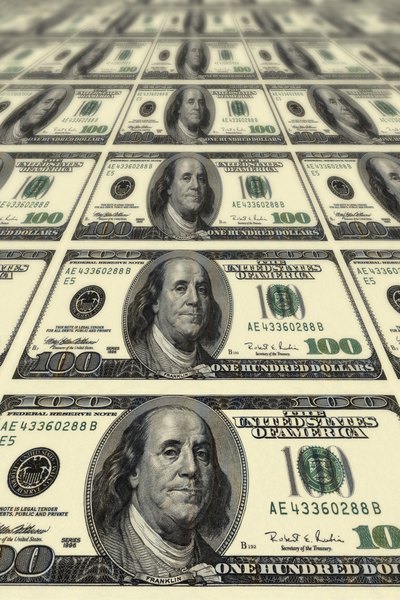How Does Transferring Money From a Savings Account to a Checking Account Affect M1?
The Federal Reserve monitors the nation’s money supply to develop economic policy.
Thinkstock Images/Comstock/Getty Images
The US Federal Reserve classifies the nation's money supply into four categories based on each category's liquidity. Liquidity refers to how fast the assets in each category can be converted to cash. This money supply includes all the currency and liquid instruments that circulate in the economy, including cash, coin and bank balances. Transferring money from your saving account to your checking account affects the M1 and M2 money supplies.
Tip
Although transferring money from your savings account to your checking account does not affect the money supply in M2, it increases the money supply in M1.
Federal Money Supply Categories
Measuring money supplies follow a naming convention known as "M" (for money), with the measures broken down into M0, M1, M2 and M3 categories. Each lower category is incorporated into the next. For example, the M1 money supply is included with M2, and M1 and M2 money supplies are included in M3. Money moves from one category to another as consumers change their spending and savings patterns.
M1 Money Supply
M1 is the most liquid of the three categories. M1 is the money in your possession and in public circulation. Although coins and bills immediately come to mind, the M1 supply also includes other assets that you can spend as easily as cash. Traveler’s checks, checking accounts and money market accounts are all included in the M1 category. However, the money held by financial institutions, such as banks and credit unions, is not included in the M1 supply.
M2 Money Supply
The M2 category includes the liquid M1 money supplies plus less-liquid forms of money. Savings deposits, time deposits such as certificates of deposits under $100,000, retail money market mutual funds, retirement accounts and US dollars that are held in foreign banks make up the M2 money supply. However, retail money market mutual funds that are held in IRAs and Keogh accounts are not included with M2.
Transfers From Savings to Checking
Transferring money from your savings account to your checking account does not change the aggregate money supply. Since your savings and checking accounts are included in M2, moving money from one account to the other does not change the M2 balance. However, savings accounts are not included in the M1 category. Transferring money from savings to checking puts more money in circulation and increases the M1 money supply.
Why Money is Transferred
Fluctuating interest rates are one reason why you transfer money between your savings and checking accounts. When interest rates are high, you keep more of your money in M2 accounts, such as money market mutual funds, to earn additional income. When interest rates fall, the lower yield is not enough to justify the inconvenience of keeping your money in a savings account or having your money tied up in a certificate of deposit. As a result, you move your money back into your checking account.
The advent of interest-bearing checking accounts keeps more money in M1 circulation since the interest rates are as good as or better than a savings account pays.
References
Writer Bio
Based in St. Petersburg, Fla., Karen Rogers covers the financial markets for several online publications. She received a bachelor's degree in business administration from the University of South Florida.

